NBA free agency is here!
Which players are sticking with their current teams and which stars are on the move?
Many players are staying put, headlined by Dallas Mavericks guard Kyrie Irving, Golden State Warriors forward Draymond Green, Milwaukee Bucks forward Khris Middleton, Charlotte Hornets guard LaMelo Ball and Portland Trail Blazers forward Jerami Grant.
Among players finding new homes: guard Fred VanVleet (Houston Rockets, forward Bruce Brown (Indiana Pacers) and guard Gabe Vincent (Los Angeles Lakers).
The NBA's free agency negotiation period officially kicked off at 6 p.m. ET on Friday, ahead of the league's annual moratorium period, which began Saturday at midnight. Deals can be agreed to during this period but can't be officially signed until Thursday.
ESPN insider Kevin Pelton reacts to the latest free agency signings and analyzes what free agency means for the league this summer.
![]() Trade grades |
Trade grades |![]() 30-team guide | Trade tracker | Buzz
30-team guide | Trade tracker | Buzz

Detroit Pistons
Deals:
Agreed to a reported four-year, $64 million extension with forward/center Isaiah Stewart
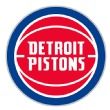 The timing of the Stewart news is interesting because rookie extensions that take place in July typically -- though not always -- are max deals like we've previously seen struck by top-three picks Anthony Edwards and LaMelo Ball as well as All-Star Tyrese Haliburton and rising star Desmond Bane. It's rare that agreement can be struck on a deal like this until close to the deadline just before the start of the regular season.
The timing of the Stewart news is interesting because rookie extensions that take place in July typically -- though not always -- are max deals like we've previously seen struck by top-three picks Anthony Edwards and LaMelo Ball as well as All-Star Tyrese Haliburton and rising star Desmond Bane. It's rare that agreement can be struck on a deal like this until close to the deadline just before the start of the regular season.
That aspect noted, this seems like a reasonable balance of risk and benefit for both player and team. Stewart's deal is comparable to what he might have been offered using the non-taxpayer midlevel exception by another team next summer. That's currently projected at a four-year value of $56 million, but with the chance to get as high as $59 million if the salary cap raises a maximum 10%.
Having started since his second season, Stewart had a chance to land in the middle ground where certain restricted free agents get favorable offer sheets (like Matisse Thybulle this year) and others languish waiting on an offer (like P.J. Washington). That created risk on Detroit's side of a player-friendly offer sheet and on Stewart's side of being forced to play for the qualifying offer. An extension takes both of those scenarios off the table.
For the Pistons to come out ahead on this deal, Stewart will have to continue the development as a shooter we saw last season, allowing him to play power forward next to their other young big men (Marvin Bagley III, Jalen Duren and James Wiseman).
Stewart's 33% 3-point shooting was no better than the previous two seasons, but it came on far greater volume: 5.2 attempts per 36 minutes, up from 0.9 in 2021-22. Historically, attempts have better predicted the gravity players have on defenses than accuracy. Still, Stewart needs to shoot a higher percentage to force opposing teams to fear those attempts.
The best news for Detroit here is Stewart's age: 22, younger than four players drafted in the first round last month (Kobe Brown, Jaime Jacquez Jr., Kris Murray and Marcus Sasser). This deal will take him right up to his likely peak years in the NBA.
The Pistons also retain ample cap flexibility next summer. Remarkably, Stewart's guaranteed salary will be their largest on the books for 2024-25, when Bojan Bogdanovic's $19 million salary is just $2 million guaranteed.
Atlanta Hawks
Deals:
Agreed to a reported four-year extension with guard Dejounte Murray worth up to $120 million
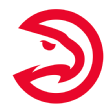 I'm surprised the Hawks were able to extend Murray at this base salary, which represents the largest possible increase after a change in the new NBA collective bargaining agreement allowed raises up to 40% in the first season of an extension (previously 20%).
I'm surprised the Hawks were able to extend Murray at this base salary, which represents the largest possible increase after a change in the new NBA collective bargaining agreement allowed raises up to 40% in the first season of an extension (previously 20%).
A deal starting with a base value of $24.8 million, plus an additional $2.1 million incentives, still seemed insufficient to sign Murray. He would have been eligible to sign for up to a projected $40.8 million as an unrestricted free agent next summer. That said, this was a significant payday for Murray. When he signed his current contract, an extension to his rookie deal as the No. 29 overall pick, Murray was coming back from an ACL tear and hadn't yet established himself as an NBA-caliber starter.
Within 2½ years, Murray had become an All-Star. This is his first time getting compensated at that level. For Atlanta, this is a huge win that makes the recent John Collins trade look more palatable. Part of the danger in the Hawks giving up two unprotected first-round picks for Murray, plus a third protected one from the Charlotte Hornets, was the possibility of either losing him in free agency after two seasons or having to overpay to retain him.
This extension assures Atlanta avoids both of those scenarios. After dealing Collins for Rudy Gay, whose contract expires after this season, the Hawks have approximately $155 million committed to 13 players for 2024-25, including several with non-guaranteed salaries. The current projection for the luxury tax line is $172.6 million, meaning Atlanta could have room to extend center Onyeka Okongwu this offseason without having to worry much about the tax.
The Hawks also have forward Saddiq Bey headed toward restricted free agency next summer if he doesn't sign an extension before the start of the regular season, so there still might be choices to be made in Atlanta if the team doesn't justify going into the luxury tax with its play. Those options all look a lot more favorable with Murray on the roster.
Philadelphia 76ers
Deals:
Signed guard Patrick Beverley to reported one-year, minimum deal
Signed center Mo Bamba to reported one-year, minimum deal
Agreed to reported one-year, minimum deal with center Montrezl Harrell
Matched reported three-year, $23 million offer sheet by Utah Jazz to center Paul Reed
 When the Sixers decided Sunday night to match the Jazz's offer sheet for Reed, their backup center, it was the first contract they've signed for more than the veteran's minimum this summer. That's meaningful in terms of both Philadelphia's situation this season with regard to the luxury tax and the team's possible cap space next summer.
When the Sixers decided Sunday night to match the Jazz's offer sheet for Reed, their backup center, it was the first contract they've signed for more than the veteran's minimum this summer. That's meaningful in terms of both Philadelphia's situation this season with regard to the luxury tax and the team's possible cap space next summer.
Based on reporting by ESPN's Adrian Wojnarowski that the second and third years of Reed's contract become guaranteed if his team reaches the conference semifinals, I couldn't help but think of Steve Hutchinson.
For those of you who aren't avid followers of the NFL in general or the Seattle Seahawks in particular, Hutchinson was a future Hall of Fame guard on the Seahawks team that reached the Super Bowl in 2006 before signing an offer sheet with the Minnesota Vikings that included a clause guaranteeing the entire deal -- atypical for NFL contracts -- if Hutchinson was not the team's highest-paid offensive lineman.
That clause had no impact for the Vikings but would have forced the Seahawks to either trade fellow Hall of Fame left tackle Walter Jones (arguably the team's most valuable player) or guarantee Hutchinson's deal. After a special master ruled the clause legal, the Seahawks declined to match the offer sheet.
Unlike the NFL's rules at the time, the NBA is much more restrictive about the potential terms of an offer sheet. However, they don't limit guarantee language, a loophole Utah utilized here. Naturally, the 76ers are far more likely to reach the conference semifinals -- having done so five times in the past six years -- than the building Jazz.
Guaranteeing Reed a salary in the $8 million range might not be the worst thing, the reason Utah was comfortable offering this deal in the first place. A favorite of statistical models entering the draft, Reed has been productive in a reserve role in Philadelphia and had back-to-back double-doubles starting in place of the injured Joel Embiid in last year's playoffs. Still just 24, Reed has room for continued development.
All of those factors led the Sixers to match the offer sheet, taking them $6.6 million over the luxury tax line, according to ESPN's Bobby Marks, with 13 players under guaranteed contract -- one shy of the minimum 14.
Already, Philadelphia saw reserves Jalen McDaniels (Toronto Raptors), Shake Milton (Minnesota Timberwolves) and Georges Niang (Cleveland Cavaliers) depart for more lucrative multiyear offers than the 76ers were willing to make. Philadelphia has signed Bamba and Beverley to minimum-salary deals.
Both additions look like good values. Beverley showed during his late-season stint with the Chicago Bulls that he can still be a difference-maker after an underwhelming half-season with the Los Angeles Lakers. That's particularly true if his shooting bounces back. A career 37% 3-point shooter, Beverley has hit just 34% the past two seasons and seen his free throw shooting decline as well.
This time a year ago, Bamba commanded a $10.3 million salary to re-sign with the Orlando Magic on a deal with a non-guaranteed second season. He lost his role in the Orlando rotation to Mo Wagner and was subsequently traded to the Lakers for Beverley. Still just 25, Bamba has developed into a capable 3-point shooter (38% the last two seasons) who also protects the rim.
The issue for the Sixers right now is their roster looks heavier on the guard and center spots than at forward, where Danuel House Jr. is the only holdover behind starters Tobias Harris and P.J. Tucker. We may see more three-guard lineups from Philadelphia and perhaps Bamba and Reed could play together as a backup front line thanks to Bamba's shooting.
Hanging over everything is what happens with James Harden's reported trade request. A Harden trade has the potential to reorient the roster with more big wings, albeit at the expense of a premier playmaker. Stay tuned.
Minnesota Timberwolves
Deals:
Agreed to a reported three-year, $42 million extension with center Naz Reid
Agreed to a reported five-year extension with guard Anthony Edwards
Agreed to a reported two-year, $10 million deal with guard Shake Milton
Agreed to a reported deal with forward Troy Brown Jr.
 Edwards is the last of the three All-Stars from the 2020 draft to reach a rookie extension, all of which include language boosting their salary to 30% of their cap if they make an All-NBA team this season. Edwards was the highest finisher in All-NBA voting of the group last season, ranking 24th. Starting this year, the top 15 vote getters will make All-NBA regardless of position.
Edwards is the last of the three All-Stars from the 2020 draft to reach a rookie extension, all of which include language boosting their salary to 30% of their cap if they make an All-NBA team this season. Edwards was the highest finisher in All-NBA voting of the group last season, ranking 24th. Starting this year, the top 15 vote getters will make All-NBA regardless of position.
That Edwards factored into All-NBA voting at all was surprising given his sluggish start. He averaged just 20.8 PPG over the first 14 games of the season while lamenting how the arrival of Rudy Gobert had cramped his ability to get to the basket. Improved conditioning and Karl-Anthony Towns' extended absence helped Edwards get back into gear, and he averaged 25.4 PPG the rest of the way, making his first All-Star appearance.
In the playoffs, Edwards' 31.6 PPG in a first-round loss to the Denver Nuggets were the most any player averaged against Denver en route to the title, putting him ahead of the likes of Devin Booker, Jimmy Butler, Anthony Davis, Kevin Durant and LeBron James.
Given Edwards won't turn 22 until next month, his ceiling is as high as any guard in the NBA. There was never any question Minnesota would max out the No. 1 pick, although his rapid jump in salary from $13.5 million in the final season of his rookie contract will force the Timberwolves into tough decisions.
Already, Minnesota has two supermax contracts on the books for 2024-25 in Gobert ($43.8 million) and Towns ($49.7 million in the first season of his extension). Those two and Edwards alone will take the Timberwolves almost to the salary cap before even looking at the rest of the roster, which includes another 2020 first-round pick up for an extension in starting small forward Jaden McDaniels.
There does not appear to be a path for Minnesota to keep all three centers: Gobert, Towns and backup Naz Reid, who signed a three-year, $42 million extension ahead of unrestricted free agency this summer.
In the short term, the Timberwolves went bargain shopping to fill out their rotation this season after waiving forward Taurean Prince before his salary became guaranteed. Minnesota and the Lakers more or less swapped Prince for Brown, who made a career-high 45 starts for the Lakers before falling out of their playoff rotation. Brown doesn't play quite as physical defense as Prince, but he's a useful reserve if he can maintain career-best 38% 3-point shooting -- which was matched by making a career-high 87% of free throws.
Milton will be making more than the minimum salary for the first time in his career after signing a long-term deal with the Philadelphia 76ers in 2019 coming off a two-way contract as a second-round pick. He's been a regular part of the Sixers' deep guard rotation, peaking at 13.0 PPG and 3.1 APG in 2020-21. Milton probably steps into the role previously held by unrestricted free agent Jaylen Nowell, offering less dynamic shot creation but better shooting (38% from 3 last season, 36.5% career).
Phoenix Suns
Deals:
Agreed to a reported two-year deal with guard Eric Gordon
Agreed to a reported two-year deal with guard Damion Lee
Agreed to a reported two-year deal with forward Keita Bates-Diop
Agreed to a reported deal with forward Yuta Watanabe
Agreed to a reported two-year deal with center Drew Eubanks
Agreed to a reported one-year deal with center Chimezie Metu
 Meet the 2023-24 Suns, minimum division. With the Bradley Beal trade pushing Phoenix's salary to the point where new collective bargaining agreement restrictions made using their taxpayer midlevel exception impossible, the Suns were limited to making minimum-salary offers to outside free agents. They made a bunch.
Meet the 2023-24 Suns, minimum division. With the Bradley Beal trade pushing Phoenix's salary to the point where new collective bargaining agreement restrictions made using their taxpayer midlevel exception impossible, the Suns were limited to making minimum-salary offers to outside free agents. They made a bunch.
By virtue of playing in a warm-weather market, having copious playing time available and offering the chance to compete for a championship, Phoenix was able to get an excellent group of players at a bargain.
The marquee name, reported Sunday, is Gordon -- who was set to make $20 million this season before the LA Clippers decided to waive him prior to that salary guaranteeing. Now, Gordon will be playing against them. It's also full circle for Gordon, who signed an offer sheet with the Suns as a restricted free agent in 2012 and finally got to Phoenix 11 years later.
It won't be surprising to see Gordon finish games alongside Beal and Devin Booker, putting ball handling duties in Booker's hands. That group is largely interchangeable from a size perspective, and all three are outstanding outside shooters.
The challenge for those Suns lineups will be defending bigger wings. That's where Bates-Diop could come in. At 6-foot-8, Bates-Diop can defend either forward spot. Shooting has always been the question mark, as Bates-Diop hit just 30% of his 3-point attempts in four NBA seasons coming into last season before hitting 39% on 142 attempts for the San Antonio Spurs.
The volume still wasn't particularly high (3.6 attempts per 36 minutes, fewer than the 4.7 Torrey Craig attempted as Phoenix's starting small forward most of last season), but Bates-Diop could carve out an important role if he can at least keep defenses honest with his shooting.
I also really like the value with Watanabe, who reunites with Kevin Durant after playing together during the first half of last season in Brooklyn. The two players enjoyed strong chemistry, with Watanabe posting a 75% effective field goal percentage on 75 shot attempts with Durant on the court, according to Second Spectrum tracking.
Some of that was probably fluky 3-point shooting -- Watanabe had made 35% of his career attempts before jumping to 44% last season. However, Durant created plenty of open attempts for Watanabe, who also supplied a dose of rim protection to undersized Nets second units.
When the Suns play more conventional second units, Eubanks will make a strong backup center. For some reason, the market hasn't caught on to Eubanks' effective play, as this is his second consecutive year signing for the minimum in free agency. He was a better option for the Portland Trail Blazers than starter Jusuf Nurkic at times last season, making 65.5% of 2-point attempts and blocking 2.3 shots per 36 minutes.
Metu brings a similar skill set to Phoenix as a finisher at the rim (66% on 2s), though he has also stepped away from the basket to stretch the floor at times. Metu attempted 3.1 triples per game in 2021-22, making them at just a 31% clip, before seeing his attempts drop by more than half last season in a more conventional center role.
Lastly, the Suns brought back Lee, who averaged 20.4 minutes per game on a minimum contract for them last season. Lee hit a career-best 44.5% of his 3s, though defensive limitations still minimized his role in the playoffs. Lee may not be a rotation regular with Phoenix adding so much wing depth, but he'll be useful as insurance when players ahead of him miss time.
All told, the Suns did well enough adding on the minimum that I feel better about their chances to contend in the Western Conference than I did at the time of the Beal trade. Based on the experience of other teams that have loaded up with minimum-salary players, most notably the Los Angeles Lakers the past two seasons, not all of these signings will work out. As long as two or three of the group are capable of being part of the playoff rotation, that should provide Phoenix enough depth to fill one out.
The other interesting aspect of the Suns' filling out their roster with minimum salaries is it means a pivot away from their reported strategy of re-signing players using Bird rights to have them available for trades. With 15 players under contract, Phoenix no longer has a spot left for such a player without waiving one of two players (Jordan Goodwin and Ish Wainright) whose salaries are not fully guaranteed.
Of course, those salaries also would have been taxed, and it turns out new Suns owner Mat Ishbia may have some limits when it comes to spending. Per ESPN's Bobby Marks, Ishbia did agree to shell out an extra $8 million in taxes by making several of these contracts two years with a player option rather than one-year deals that are only paid and taxed at the smaller minimum for players with two years of experience.
Charlotte Hornets
Deals
Agreed to a reported five-year extension with guard LaMelo Ball
Forward Miles Bridges signed one-year, $7.9 million qualifying offer
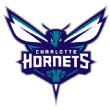 In the wake of Ball's injury-hampered 2022-23 season, which saw him limited to 36 games for a team that was going nowhere by the time he was able to get on the court for an extended period in mid-December, it's easy to forget the excitement about his All-Star 2021-22 campaign. At age 20, Ball averaged 20.1 PPG, 7.6 APG and 6.7 RPG for an above-.500 team.
In the wake of Ball's injury-hampered 2022-23 season, which saw him limited to 36 games for a team that was going nowhere by the time he was able to get on the court for an extended period in mid-December, it's easy to forget the excitement about his All-Star 2021-22 campaign. At age 20, Ball averaged 20.1 PPG, 7.6 APG and 6.7 RPG for an above-.500 team.
Charlotte is hoping to get back to that level or beyond with LaMelo healthy, Bridges' return and the addition of No. 2 overall pick Brandon Miller. If the Hornets are back in the postseason mix and Ball avoids injury, he could have a chance to make an All-NBA team and capitalize on the 30% max provision that would take this contract to a full possible value of a projected $260 million.
From Charlotte's perspective, there was no reason to take any chances with LaMelo's extension. The Hornets couldn't possibly replace him in free agency and need reasons to feel good about the organization's direction after a disappointing 2022-23 campaign. Getting this deal done quickly is good news for Charlotte, which now turns its attention to adding to the roster in free agency.
On Sunday, the Hornets saw restricted free agent Bridges decide to accept his $7.9 million qualifying offer, which will make him an unrestricted free agent next season. Bridges was restricted again because he never signed a contract last year while his legal situation was being resolved.
In November, Bridges entered a no-contest plea to a felony domestic violence charge of injuring a child's parent and was sentenced to three years of probation, but no jail time, as part of a deal with prosecutors. At season's end, the NBA issued Bridges a 30-game suspension but deemed 20 of those games served because Bridges missed the entire year and was not paid.
From a basketball standpoint, having Bridges will be a boost for Charlotte. The last time he was on the court, Bridges averaged 20.2 points, 7.0 rebounds and 3.8 assists in 2021-22 at age 24. Bridges signing his qualifying offer also gives the Hornets more cap room, as he'll count at that $7.9 million figure rather than his $16.2 million qualifying offer as a restricted free agent.
By renouncing the rights to restricted free agent P.J. Washington, Charlotte could clear up to $19 million in space to add to the roster. Alternatively, the Hornets could hope to re-sign Washington to a deal that also lowers his $17.4 million cap hold and add more modestly.
Denver Nuggets
Deals:
Agreed to a reported two-year, $10.25 million deal to re-sign guard Reggie Jackson
Agreed to a reported one-year deal with forward Justin Holiday
Agreed to a reported one-year deal with center DeAndre Jordan
 A new-look bench for the defending champion Nuggets is taking shape, and it looks much more dependent on young talent than last year. Denver has seen Bruce Brown Jr. and Jeff Green, the two reserves who each averaged more than 13 MPG in the title run, agree to sign elsewhere without direct replacements.
A new-look bench for the defending champion Nuggets is taking shape, and it looks much more dependent on young talent than last year. Denver has seen Bruce Brown Jr. and Jeff Green, the two reserves who each averaged more than 13 MPG in the title run, agree to sign elsewhere without direct replacements.
Because the Nuggets started free agency near the first luxury-tax apron, the $5 million taxpayer mid-level exception (MLE) was their only method of offering outside free agents more than the minimum. Denver instead chose to use it on Jackson, who played sparingly in the playoffs after joining the Nuggets via buyout.
After originally slotting in as Denver's backup point guard, Jackson saw Brown take on those duties in the playoffs. Jackson played just 18 minutes total, the vast majority of those coming in the first two rounds when the Nuggets blew out opponents.
It's tough to see much in Jackson's 2022-23 performance with the LA Clippers to justify expending a scarce exception on him. Jackson did start 38 games for the Clippers but lost his job and was eventually traded as an expiring contract. His .514 true shooting percentage was far below average and Jackson doesn't offer enough as a distributor or defender to make up for it.
Jackson hasn't contributed at an above-replacement level since 2020-21, when he shot a career-high 43% on 3s for the Clippers. Based on this contract, however, he projects as a key part of Denver's rotation. The Nuggets' only other point guard behind Jamal Murray on the current roster is 2023 second-round pick Jalen Pickett.
With the taxpayer MLE spoken for, Denver had only the minimum to offer Holiday as a more direct replacement for Brown on the wing. At 6-foot-6, Holiday fits the mold of what the Nuggets want in their wings in terms of ability to go over screens and provide "rear view" contests from behind on pull-up jumpers.
Holiday fell out of rotations in both Atlanta and Dallas last year by virtue of shooting just 32% from 3-point range, his lowest mark since 2014-15. A career 36% 3-point shooter, Holiday is a good bet to approach that mark next season. Still, it would be disappointing if first-round pick Julian Strawther is unable to beat him out for a rotation spot on the wing next to holdover Christian Braun.
Up front, Denver is bringing back Jordan, whose primary contribution in the playoffs came in the locker room. Jordan did play three minutes in the decisive Game 5 of the NBA Finals with Nikola Jokic in foul trouble. That was his first game action since the opening round.
Coach Michael Malone started out conventionally at center, using Jordan and later deadline pickup Thomas Bryant behind Jokic. By playoff time, the Nuggets had decided to go with Green and Aaron Gordon as an undersized, versatile frontcourt duo when Jokic rested. It's up to Zeke Nnaji or second-round pick Hunter Tyson to fill Green's role this year.
Portland Trail Blazers
Deals:
Agreed to a reported five-year, $160 million deal to re-sign forward Jerami Grant
Matched a three-year, $33 million offer sheet from the Dallas Mavericks to forward Matisse Thybulle
Request: Guard Damian Lillard requests a trade

Where might Damian Lillard land now that the seven-time All-NBA pick has requested a trade from the Portland Trail Blazers?
Coming off the highest-scoring season of his career at 32.2 PPG -- which would be the most ever by a player to change teams before the next season, per ESPN Stats & Information -- Lillard remains an elite contributor entering his age-33 season.
He earned All-NBA third-team honors in 2022-23 despite playing just 58 games before being shut down with the Blazers out of play-in contention. Although any number of teams will surely be interested in adding Lillard, who is under contract through 2026-27 after signing an extension last summer, Portland's willingness to work with him on a trade to a desired destination might limit his options.
Still, the Blazers look likely to receive far more for Lillard than the Washington Wizards did when they dealt All-Star guard Bradley Beal -- who controlled the process with a no-trade clause -- earlier this offseason.
Let's take a look at the realistic options for Lillard suitors, what they might be able to offer Portland, and how Lillard would help each of them contend for the championship he has yet to win during a Hall of Fame career.
Perhaps no team would change its outlook more by adding Lillard than the Nets, who currently project as a fringe playoff team in the Eastern Conference in large part because they lack high-end shot creation.
By virtue of the draft picks they've stockpiled via trades sending stars Kevin Durant, James Harden and Kyrie Irving elsewhere, Brooklyn is capable of building a competitive offer without sending out any of the players who were part of the team's rotation in last year's playoffs.
That would mean dropping Lillard into a young core led by Mikal Bridges, who averaged 26.1 PPG after being acquired in the Durant trade. After dealing Durant and Irving, the Nets were typically in games but lacked a finishing kick. They went 9-7 in games decided by at least seven points but 3-8 in games closer than that. During what NBA Advanced Stats defines as clutch situations (game within five points in the last five minutes of regulation or any overtime period), Brooklyn was outscored by 29.5 points per 100 possessions after the trades.
Only the Blazers, with Lillard largely watching from the bench, had a worse clutch net rating in that span (minus-42.3). Certainly, Dame Time would be a solution for the Nets' problems. Although Lillard wasn't as dominant as usual in the clutch last season, his 30.6 points per 36 minutes in those situations ranked 18th among players who saw at least 50 minutes of clutch action. No Brooklyn regular averaged more than 22.8 points per 36 minutes in clutch situations after the trade, with Bridges' production in particular (10.9 points per 36 minutes on 22% shooting) falling off a cliff.
Adding Lillard would shift Bridges back to a secondary role late in games while allowing him to be a primary scorer against second units. In the short term, that would make the Nets a contender. Down the road, Brooklyn must evaluate how far it wants to go in pursuit of a player entering his mid-30s, much older than core pieces Bridges and Cam Johnson, who will both be 27 going into next season.
The other complication to a Nets-Blazers trade is matching salary. Presumably, Brooklyn would make Ben Simmons a part of any deal. A package of Simmons and Patty Mills, for example, would work financially and add only modestly to the Nets' payroll. Yet Portland could rightfully demand extra picks to take back Simmons' contract, which pays him $78 million over the next two seasons.
All along, the Heat have looked like the desired Lillard destination team most motivated to trade everything it can to get him.
A Miami offer would surely be built around 23-year-old guard Tyler Herro, just starting a four-year extension that pays him $27 million this season (not including $2.5 million in unlikely incentives, per ESPN's Bobby Marks).
To take back Lillard's $45.6 million salary, the Heat would also have to include either Duncan Robinson or Kyle Lowry on an expiring contract, depending on whether the Blazers prefer to take back less salary this season (Robinson) or less long term (Lowry).
Besides Herro, a suboptimal fit on a Portland team that already has invested heavily in young guards Scoot Henderson, Shaedon Sharpe and Anfernee Simons, Miami could offer multiple first-round picks and swaps.
Just how many would depend on the Heat tweaking the protections on a 2025 first-round pick owned by the Oklahoma City Thunder. If Miami instead agreed to send Oklahoma City an unprotected pick in 2026 -- probably preferable to the Thunder if the Heat are landing Lillard and therefore likely to be a championship contender in 2024-25 -- that would free up the inclusion of a 2024 first-round pick to go with two in 2028 and 2030. Miami could then also offer swaps in 2025, 2027 and 2029.
Intriguingly, the Heat and Thunder already agreed to a trade Friday night sending Victor Oladipo to Oklahoma City with draft compensation. It will be interesting to see whether Miami already altered the pick protections as part of that deal. Having lost Max Strus and Gabe Vincent via free agency, the Heat wouldn't be able to simply plug Lillard into last year's NBA finalists.
Still, Lillard would be a massive offensive upgrade for a team that ran low on scoring punch during its loss to the Denver Nuggets. He would also help Miami stay more competitive during the regular season, helping assure that another Finals run wouldn't require slogging through the play-in tournament and three consecutive rounds without home-court advantage.
It's possible, and maybe even probable, that another team will offer better draft picks for Lillard than the Heat can. Still, the combination of Lillard's preference for Miami (as reported by Andscape's Marc J. Spears) and the Heat's need for him makes them the favorites.
Since Thursday's news that James Harden would opt into his contract and seek a trade, landing Lillard has been the obvious best-case scenario for Philadelphia replacing one All-Star point guard with another.
The question is whether the Sixers can come up with enough value in return if they're not willing to include guard Tyrese Maxey in a Lillard offer.
Right now, Philadelphia can send the Blazers only a single first-round pick as soon as 2029. The Sixers could also include swap rights on the picks they'll retain between now and then, as well as any draft compensation a Harden deal returns.
Still, it's tough to see the 76ers managing to cobble together enough to beat an offer that sends Lillard to Brooklyn or Miami.
ESPN's Ramona Shelburne reported on Twitter that Lillard "has a deep respect" for the Spurs organization, with which he has battled in past playoffs.
Pairing Lillard with No. 1 pick Victor Wembanyama would be fascinating. It would also be shockingly aggressive for San Antonio, which has rebuilt patiently over the past couple of seasons.
Sure, the Spurs could send Portland extra picks coming from the Atlanta Hawks (unprotected in 2025 and 2027), Charlotte Hornets (starting next year), Chicago Bulls (as early as 2025) and Toronto Raptors (also starting next year). But those aren't prime picks because of the protections on most of them.
A fit between the two sides doesn't seem likely.
The field
ESPN's Adrian Wojnarowski reported the Clippers have interest in exploring a Lillard trade, along with the Heat and 76ers. It's difficult to see how the Clippers, limited to trading a pair of first-round picks in 2028 and 2030, can offer enough value in return without giving up one of their current stars (Paul George and Kawhi Leonard) as part of a larger deal.
If the Boston Celtics were motivated to land Lillard, they would stand a better chance of making a competitive offer. If the Celtics prioritized adding a dynamic ball handler at the expense of getting older, and if the Blazers prioritized staying competitive now, a package of Jaylen Brown and Robert Williams III would be worth considering.
The New York Knicks are typically thrown out any time a star player is moved, although Jalen Brunson's development into a star at point guard makes Lillard less of a need.
As the Blazers attempt to extract maximum value in a trade sending star guard Lillard elsewhere, they'll be doing so with their two projected starting forwards. Grant and Thybulle started all 85 games combined they played in for Portland last season, including nine times together between Thybulle's addition at the trade deadline and the Blazers giving up the ghost on competing for a play-in spot.
After officially receiving Dallas' offer sheet Thursday just before the lifting of the NBA's moratorium on most transactions, Portland wasted little time matching it. This deal pays Thybulle like the high-end reserve or low-end starter he has been throughout his career, and at 26 there's low probability he loses his trade value if the Blazers decide to move on at some point in the near future.
It's equally plausible Thybulle gains trade value if he can demonstrate that his 39% 3-point shooting on 85 attempts after the trade represented a real skill improvement. There has never been any question about Thybulle's defensive bona fides. He's capable of serving as a wing stopper but even better as a help defender utilizing his wingspan and well-honed instincts to rack up steals and blocks at league-leading ranks.
This deal is somewhat less team-friendly than one Thybulle would have signed directly with Portland. As reported by ESPN's Adrian Wojnarowski, there's a player option on the third season that would allow Thybulle to get to unrestricted free agency at age 28. Additionally, per ESPN's Bobby Marks there's a 15% trade bonus should the Blazers look to move Thybulle rather than keep him as part of their rebuild around young guards Scoot Henderson and Shaedon Sharpe.
The mere fact that Dallas signed Thybulle to an offer sheet represents a thawing in restricted free agency, which has dried up in recent years because of the long wait for the matching period to start after the moratorium. By this stage, the Mavericks weren't risking missing out on a desired target with Portland's match.
Still armed with the non-taxpayer midlevel exception, Dallas could look to target Kelly Oubre Jr. as the top wing still available.
Before Lillard's trade request was made public, the Blazers' attempts to "thread the needle" on building a competitive team around Lillard, while also developing recent lottery picks Henderson and Sharpe, ultimately weren't enough to sway the seven-time All-Star. But they gave Grant plenty of leverage as an unrestricted free agent. He cashed in with the largest deal for a free agent this summer in terms of total salary. Lillard's request didn't change the team's intent to sign Grant, Wojnarowski reported last week.
In the end, Grant was wise to pass on a possible extension with Portland he could have signed starting in January. That would have paid him a maximum of $112.7 million over four years, meaning less security and a lower average salary.
The question is whether Grant makes enough of a difference in terms of winning to justify that outlay. His value by advanced stats has always lagged his impact by the eye test, largely because Grant doesn't do much to fill out the box score. His rebound and steal rates are notably poor, surprising given Grant's offense and individual defense.
Despite solid production, Grant didn't help lift the Blazers back into the play-in mix after being added last summer. At the same time, players of his ilk -- capable of creating offense and spacing the floor as well as defending either forward spot -- are constantly in high demand in free agency. Had Portland been unwilling to offer the fifth year that no other team could, Grant would surely have had suitors elsewhere.
As it is, Grant's contract will start at a bump from last year's $21 million salary to $27.6 million, presuming maximum 8% annual raises. If the Blazers eventually choose to move on from Grant in favor of players who better fit a rebuilding timetable, it will be interesting to see how this deal is valued elsewhere.
The back half of the contract looks like an overpay with Grant, now age 29, in the decline phase of his career. Over the next couple of years, however, other teams -- perhaps even Dallas -- could view him as an opportunity to upgrade a key spot while sending back less effective players on shorter contracts and draft picks. As a result, I think Portland's decision to make this offer despite uncertainty about Lillard's future was reasonable.
Sacramento Kings
Deals:
Agreed to a reported three-year, $54 million extension with forward Harrison Barnes
Agreed to a reported two-year, $16 million deal to re-sign forward Trey Lyles
Agreed to a reported three-year, $20 million deal with forward Sasha Vezenkov
Agreed to a reported five-year, $217 million renegotiation and extension with center Domantas Sabonis
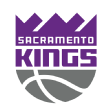 When the Kings dealt Richaun Holmes and the No. 24 pick in last Thursday's NBA draft to the Dallas Mavericks, increasing their projected cap space to more than $30 million, speculation immediately began about the forwards Sacramento could target in free agency to replace Barnes.
When the Kings dealt Richaun Holmes and the No. 24 pick in last Thursday's NBA draft to the Dallas Mavericks, increasing their projected cap space to more than $30 million, speculation immediately began about the forwards Sacramento could target in free agency to replace Barnes.
Instead, the Kings are bringing back Barnes on a deal that will pay him $18 million per year, a slight decline from last season's $18.35 million to conclude a contract that descended year over year. That's a reasonable price point for a key part of last season's Beam Team.
Barnes is reliable -- he has missed just 19 games total since being dealt to Sacramento at the 2019 trade deadline -- and his ability to defend either forward position meshes well with fellow starter Keegan Murray, allowing the two to trade spots depending on matchups. Given his above-average shooting (38% career from 3), Barnes should hold much of his value into his mid-30s.
That said, it is a little disappointing the Kings weren't able to do more with their cap space. With Sabonis' extension, Sacramento won't be looking at this much room to add in the foreseeable future. As the playoff team with the most cap space, the Kings had the ability to upgrade at forward, even if only by adding a player more on the timetable of their stars (Sabonis is 27 and De'Aaron Fox 25).
It's possible Sacramento attempted to do just that but read the tea leaves that free agent fits like Draymond Green, Kyle Kuzma and Khris Middleton were all headed back to their current teams, meaning the Kings never had a chance to get them.
Because Barnes' smaller contract replaced his $27.5 million cap hold, Sacramento had enough space to renegotiate Sabonis' 2023-24 salary upward and sign him to a long-term extension at the same time, similar to his former Indiana Pacers teammate Myles Turner.
As ESPN's Bobby Marks explained, Sabonis was eligible to add no more than $138 million on a four-year extension based on his previous $22 million salary (including $2.6 million likely bonuses that will carry over to the extension). By using $8.6 million of their cap space to increase Sabonis' salary for next season to $30.6 million, the Kings were instead able to offer a market-rate extension starting at nearly $42 million.
In exchange, Sacramento did get Sabonis under contract for slightly less than his projected max salary in 2024-25, which would be $42.6 million based on the current cap projection and could go up from there.
Before extending Sabonis, the Kings made a couple of other moves using their cap space. They agreed to bring back Lyles, who enjoyed the best season of his career backing up Barnes and Murray, on a two-year contract worth $16 million that was essentially the room exception.
Additionally, Sacramento brought over EuroLeague MVP Sasha Vezenkov after acquiring his rights in a trade with the Cleveland Cavaliers last year. Vezenkov took another leap for Greek power Olympiacos, averaging 17.6 PPG and 7.0 RPG in EuroLeague play on hyperefficient shooting: 66% on 2s and 40% on 3s. Lest that seem like a fluke, Vezenkov was even more accurate against lesser competition in the Greek GBL, shooting 68% from 2 and 43% from 3.
Because Vezenkov provides little value as a playmaker and defender, he'll have to score efficiently in the NBA to be valuable. My SCHOENE projection system likes his chances, comparing Vezenkov to fellow international forwards Ersan Ilyasova and Toni Kukoc as two of his most similar players at the same age, with Donyell Marshall and Troy Murphy also close comps.
Although the Kings will still have their room exception available -- or could possibly create a little more cap space than that by using the room exception to re-sign Lyles -- it looks like Vezenkov will be the biggest addition to a Sacramento roster that brings back the bulk of players from last season's most pleasant NBA surprise.
Utah Jazz
Deals:
Agreed to a reported three-year, $23 million offer sheet with Philadelphia 76ers center Paul Reed
Agreed to a reported three-year, $55 million renegotiation and extension with guard Jordan Clarkson
Reported three-year, $23 million offer sheet to center Paul Reed matched by Philadelphia 76ers
 When Clarkson made the decision to exercise his $14.26 million player option to stay with the Jazz rather than seeking a longer deal in free agency, it signaled the possibility of a move like this where Utah would use its cap space to renegotiate his salary upward to market value and simultaneously sign him to an extension.
When Clarkson made the decision to exercise his $14.26 million player option to stay with the Jazz rather than seeking a longer deal in free agency, it signaled the possibility of a move like this where Utah would use its cap space to renegotiate his salary upward to market value and simultaneously sign him to an extension.
The advantage of doing so as opposed to simply signing Clarkson outright as a free agent is the way the Jazz are able to structure his salary from year to year. With limited talent still available in free agency, Utah boosted his salary by more than $9 million from his scheduled $14.26 million, per ESPN's Bobby Marks. The extension then decreases Clarkson's salary by a maximum 40% to a $14.1 million base.
That scenario is a win-win for both Clarkson -- who gets more money up front -- and the Jazz, who maximize their spending power next summer by pushing more salary into this season. Without any big new contracts kicking in, Utah should again have a path to substantial cap space during the 2024 offseason, when the team will be closer to completing a retool after trading Rudy Gobert and Donovan Mitchell last year.
After their creative offer to Reed was matched, the Jazz regained access to their $7.7 million room exception. The question is whether there's anyone left worth that kind of substantial investment at this stage of free agency.
With only a sliver of cap space remaining, the Jazz will surely utilize their $7.7 million room extension to make an offer sheet to Reed. Based on reporting by ESPN's Adrian Wojnarowski that the second and third years of the contract become guaranteed if his team reaches the conference semifinals, I couldn't help but think of Steve Hutchinson.
For those of you who aren't avid followers of the NFL in general or the Seattle Seahawks in particular, Hutchinson was a future Hall of Fame guard on the Seahawks team that reached the Super Bowl in 2006 before signing an offer sheet with the Minnesota Vikings that included a clause guaranteeing the entire deal -- atypical for NFL contracts -- if Hutchinson was not the team's highest-paid offensive lineman.
That clause had no impact for the Vikings but would have forced the Seahawks to either trade fellow Hall of Fame left tackle Walter Jones (arguably the team's most valuable player) or guarantee Hutchinson's deal. After a special master ruled the clause legal, the Seahawks declined to match the offer sheet.
Unlike the NFL's rules at the time, the NBA is much more restrictive about the potential terms of an offer sheet. However, it doesn't limit guarantee language, a loophole Utah is utilizing here. Naturally, the 76ers are far more likely to reach the conference semifinals -- having done so five times in the past six years -- than the building Jazz.
Guaranteeing Reed a salary in the $8 million range might not be the worst thing, the reason Utah is comfortable offering this deal in the first place. A favorite of statistical models entering the draft, Reed has been productive in a reserve role in Philadelphia and had back-to-back double-doubles starting in place of the injured Joel Embiid in last season's playoffs. Still just 24, Reed has room for continued development.
At the same time, matching this offer to Reed would take the Sixers well into the luxury tax this year and affect their reported plans to have access to cap space next summer if his contract becomes guaranteed. So it will be interesting to see whether Philly decides to match.
Between this renegotiation and taking John Collins into cap space via trade, the Jazz are just about out of it. They could consider using the remaining sliver on a similar deal with fellow guard Talen Horton-Tucker, who also picked up his 2023-24 player option for $11 million. Utah wouldn't be able to frontload that contract as heavily but could still bump Horton-Tucker up a little bit before going over the cap to fill out the roster for training camp.
Miami Heat
Deals:
Agreed to a reported two-year, minimum deal with center Thomas Bryant
Agreed to a reported deal to re-sign forward Kevin Love
Agreed to a reported deal with guard Josh Richardson
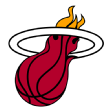 These aren't the transactions Heat fans are waiting on, not after Damian Lillard's trade request on Saturday, but filling out the roster with low-cost players will be important whether or not Miami lands Lillard.
These aren't the transactions Heat fans are waiting on, not after Damian Lillard's trade request on Saturday, but filling out the roster with low-cost players will be important whether or not Miami lands Lillard.
Already, the Heat have seen two starters from last season's Eastern Conference champions head elsewhere in free agency. Gabe Vincent agreed to sign with the Los Angeles Lakers, while Max Strus is headed to the Cleveland Cavaliers via sign-and-trade. In my trade grades for the Strus deal, I attributed that to Miami's poor track record re-signing young free agents, but tax payments were surely a factor, too.
Despite shedding Victor Oladipo's salary in a trade struck Friday with the Oklahoma City Thunder, the Heat still project to pay some $30 million in taxes this season, pending a Lillard trade. Re-signing Strus and Vincent would have pushed their tax bill far higher.
Instead, Miami is looking for bargains in free agency. Love already showed his importance to the Heat during last season's Finals run, starting 18 games. At this stage of his career, Love no longer needs a featured role, and his toughness in the paint and floor spacing (37.5% from 3 in the playoffs) are positives.
Richardson is returning to the team that drafted him in the 2015 second round before including him in the 2019 sign-and-trade that brought Jimmy Butler to the Heat. Richardson's best years came with the Heat, and Miami will hope to get more out of him than a series of teams (five in four seasons) have since then. Richardson will help replace Strus in the wing rotation.
Backup center was a trouble spot for the Heat all season. They settled on playing post-deadline addition Cody Zeller most of the playoffs. Meanwhile, Bryant was watching from the opposing bench during the NBA Finals. He saw less than one full minute of action in the playoffs for the Denver Nuggets, who gave up multiple second-round picks to land him from the Lakers at the deadline.
Before asking for a trade in the hopes of earning more consistent playing time -- and his DNP-CDs in Denver were certainly consistent -- Bryant reached new heights in his second stint with the Lakers. He shot a career-best 44% from 3-point range, albeit on limited volume, while hitting 70% of his 2s in L.A. Bryant was effective in 25 starts filling in for the injured Anthony Davis and showed stronger interior defense than we've seen in the past.
On a minimum deal, Bryant should be an upgrade for Miami. He won't turn 26 until July and could still have some development to come.
Houston Rockets
Deal:
Agreed to a reported three-year, $130 million contract with guard Fred VanVleet
Agreed to a reported four-year, $80 million contract with forward Dillon Brooks
Agreed to a reported four-year, $32 million contract with center Jock Landale
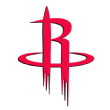 After months of rumors about James Harden's return to Houston and other veteran additions -- including one, Brook Lopez, that may still happen -- the Rockets instead made a younger guard who fits better with their existing talent the top priority.
After months of rumors about James Harden's return to Houston and other veteran additions -- including one, Brook Lopez, that may still happen -- the Rockets instead made a younger guard who fits better with their existing talent the top priority.
Oh, what a priority! Barring a stunner, VanVleet will be the only full max in this summer's free agency, narrowly edging out Kyrie Irving's deal (three years, $126 million) as the largest this summer on a per-season basis. Houston assuredly had to pay a premium to get VanVleet to leave Toronto in favor of a team that has won a combined 59 games over the past three seasons.
In VanVleet, the Rockets are getting a heady point guard whose story of self-improvement -- from undrafted rookie to All-Star to now max player -- stands in stark contrast to Houston's recent lottery picks that have yet to convert potential into team success.
I like VanVleet's fit much better than Harden's with the Rockets because he's more comfortable playing off the ball. VanVleet's 6.4 minutes time of possession as a ball handler last season (in 36.7 MPG) was far fewer than not only Harden (8.6) but also incumbent Houston point guard Kevin Porter Jr. (6.9 in 34.3), per Second Spectrum tracking on NBA Advanced Stats.
It will help the Rockets' chances of taking a step forward in 2023-24 if VanVleet gets back to the shooting we saw prior to last season. He hit 39% of catch-and-shoot 3s in 2022-23, according to Second Spectrum, after hitting 43% during his All-Star 2021-22 campaign.
Either way, VanVleet is a massive upgrade at point guard and in terms of reliability should benefit Houston's players up and down the roster. Although the price was massive, it doesn't preclude the Rockets from adding more help this summer. With VanVleet's max on the books, they still have more than $25 million in cap space if they renounce the rights to their own free agents.
Given how much money Houston had to spend, the biggest concern about this deal is the length. Rumblings in recent days had the Rockets making a two-year, max offer to VanVleet. That timing would have given them another crack at cap space in the summer of 2025, when Jalen Green and Alperen Sengun are eligible for extensions or restricted free agency and 2022 draft picks Tari Eason and Jabari Smith Jr. are entering the last season of their rookie contracts.
Additionally, VanVleet's heavy minutes averages with the Raptors (at least 35.7 MPG every season since becoming a full-time starter in 2019-20) offer concern about his long-term health. Last season's 13 games missed were VanVleet's fewest since he was strictly a reserve in 2017-18, and he'll be 32 by the time this deal concludes.
I'm less excited about Saturday's reported deals, which followed Houston striking out on luring Brook Lopez away from the Milwaukee Bucks. It's possible the Rockets had to pay a premium to keep their other targets from signing elsewhere while negotiating with Lopez. Brooks, who reportedly wasn't welcome back with the Memphis Grizzlies at any price, certainly wasn't returning at $20 million a year over four years. Meanwhile, Landale went from the minimum to $8 million annually.
On the plus side, Brooks immediately provides a massive upgrade to Houston's perimeter defense. Over the last three years, his defensive impact in luck-adjusted regularized adjusted plus-minus (RAPM) from NBAshotcharts.com ranks in the NBA's top 20 with only a handful of wings ahead of him.
The challenge for new Rockets head coach Ime Udoka will be keeping Brooks from giving up much of that value with his shot selection. On a team with plenty of talented shot creators, Brooks maintaining even last year's 22% usage rate while on the court -- his lowest since 2018-19 -- is unworkable given his inefficiency. Brooks' .494 true shooting percentage (TSP) last season, a career low, ranked ahead of only Kilian Hayes of the Detroit Pistons among players who saw at least 2,000 minutes of action.
As Udoka looks to reset Houston's culture, having Brooks avoid the kind of media confrontations in which he specialized last season will also be important. Offering a rich four-year deal doesn't exactly send Brooks the message that he needs to change his priorities, though that may have been delivered behind the scenes. Either way, adding Brooks compromises some of the shooting upgrade the Rockets got with VanVleet.
This time a year ago, Landale was being rerouted to Phoenix after being included as salary filler in the San Antonio Spurs' deal sending Dejounte Murray to the Atlanta Hawks. Landale made the team, then emerged as a trusted reserve in the playoffs. Still, Landale isn't the kind of defensive anchor Houston wanted. In a league where centers are more efficient than ever -- the average center posted a .629 TSP -- Landale's .593 mark was unimpressive.
Perhaps he was unwilling to wait out Lopez's negotiations, but I would have rather targeted the player the Suns landed to replace Landale: Drew Eubanks.
When you're starting where Houston was near the top of the lottery, there's a heavy price to pay for achieving immediate relevance through free agency. We'll see whether VanVleet, Brooks and Landale manage to combine with their recent draft picks to get there this season.
Dallas Mavericks
Deals:
Agreed to a reported three-year, $126 million deal to re-sign guard Kyrie Irving
Agreed to a reported two-year, $8 million deal with guard Seth Curry
Agreed to a reported three-year, $12 million deal to re-sign center Dwight Powell
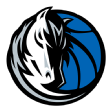 Alas, we'll never know what the Phoenix Suns might have offered Irving during their reported meeting, given their inability to sign an outside free agent for more than the veteran's minimum without a sign-and-trade. Instead, Irving settled for a contract worth more than 10 times that annually.
Alas, we'll never know what the Phoenix Suns might have offered Irving during their reported meeting, given their inability to sign an outside free agent for more than the veteran's minimum without a sign-and-trade. Instead, Irving settled for a contract worth more than 10 times that annually.
This deal is still substantially smaller than Irving's maximum possible salary ($47.6 million). Assuming standard 8% annual raises, Irving will instead make $38.9 million this season, a tiny decline from his 2022-23 salary. That difference is meaningful as Dallas attempts to add to its roster using the midlevel exception.
With 12 players under contract, including Curry, the Mavericks stand about $9 million below the luxury-tax line. That will enable them to use the larger, $12.4 million non-taxpayer midlevel exception and stay safely below the resulting hard cap at the first apron. The hard cap would still limit Dallas' ability to add salary via midseason trades, but that's worth it if the Mavericks can get another rotation piece in free agency.
Kendrick Perkins and Zach Lowe agree that when healthy, Khris Middleton and Giannis Antetokounmpo are one of the most formidable duos in the NBA.
Additionally, Dallas was able to hold the line to some degree on the length of this contract, giving Irving three years instead of the maximum five. The tradeoff is Irving getting a player option for the final season, meaning 2024-25 will become a walk year for him. We'll see how happy Irving is with the Mavericks by that point.
Most importantly, Dallas avoided the nightmare scenario of seeing Irving leave in free agency five months after giving up two rotation players and a precious first-round pick to acquire him. That was the leverage Irving carried into these negotiations, and it was enough to finally get the long-term deal he couldn't agree on with the Brooklyn Nets.
This is the third stint with the Mavericks for Curry, who first established himself as a rotation player in 2016-17 before missing the entire following season due to injury, then was back in 2019-20. Trading Curry to Philadelphia for Josh Richardson worked far better for the Sixers than Dallas.
Now 32 (33 in August), Curry is slowing down. Last season's .593 true shooting percentage, though still solidly better than league average, was his lowest ever in a full season. The Mavericks look like a good fit. Their big guards (save Irving) mean Curry can defend smaller opponents while spacing the floor for Luka Doncic and Jaden Hardy.
Curry has experience playing with both Doncic and Irving. He won't help Dallas' defense, making that a likely target with their midlevel.
On Saturday, the Mavericks agreed to bring back Powell, their longest-tenured player. Believe it or not, Powell was part of the Rajon Rondo trade, outlasting the All-Star point guard in Dallas by eight years and counting. Nearing age 32, Powell is taking a substantial pay cut from the $11 million he made last season completing an extension signed prior to an Achilles tear that ended his 2019-20 season.
No longer the dynamic athlete he once was, Powell remains a high-percentage player who made an incredible 73% from the field last year, percentage points ahead of Daniel Gafford for tops among NBA players with at least 250 attempts. Valued also for his leadership, Powell returns on a deal that allows the Mavericks to use the non-taxpayer midlevel if they find the right player to sign.
Alternatively, as ESPN's Bobby Marks noted on Twitter, Dallas could sign Curry using the taxpayer midlevel exception and avoid being hard capped at the lower apron.
New York Knicks
Deals:
Agreed to a reported four-year, $50 million deal with guard Donte DiVincenzo
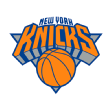 The last time we saw DiVincenzo playing for the same team as Jalen Brunson and Josh Hart at Madison Square Garden, their Villanova Wildcats were completing a Big East Tournament title in 2017. Sadly, Mikal Bridges seems unlikely to join them with the Knicks next season, though Kris Jenkins and Eric Paschall are available.
The last time we saw DiVincenzo playing for the same team as Jalen Brunson and Josh Hart at Madison Square Garden, their Villanova Wildcats were completing a Big East Tournament title in 2017. Sadly, Mikal Bridges seems unlikely to join them with the Knicks next season, though Kris Jenkins and Eric Paschall are available.
Despite the dramatic difference in sideline demeanor between legendary former Villanova coach Jay Wright and New York's Tom Thibodeau, the 'Nova pipeline was profitable for the Knicks last season. Brunson emerged as a go-to playmaker after signing as an unrestricted free agent, while Hart's addition at the trade deadline helped propel New York to the second round of the playoffs.
Now, it's back to the well for another player who has been undervalued just like his former Wildcats teammates. Coming back from injury in 2021-22, DiVincenzo had a limited market a year ago and signed a two-year deal for $9.25 million with the Golden State Warriors. Having declined a player option on the second season, DiVincenzo parlayed a bounce-back campaign into more than doubling his salary this time around.
After the raise, I still consider DiVincenzo's contract one of this summer's best values. His multiyear wins above replacement projection in my model ranked fifth among all free agents, putting DiVincenzo ahead of the likes of Jerami Grant, Cam Johnson and Kyle Kuzma, who all got more than twice as much money on four-year deals.
It probably doesn't help DiVincenzo's cause that he lacks a signature elite skill. He's a good 3-point shooter, hitting 40% last season, but not a great one. (He's hit 36% for his career, right about league average.) DiVincenzo is a capable defender, but not a stopper. His strongest attribute is having no glaring weaknesses, something that tends to get undervalued by NBA teams.
I'll be curious to see whether the Knicks see DiVincenzo as an option to supplant Quentin Grimes at shooting guard or as part of what could be the league's best second unit alongside Hart and Sixth Man of the Year runner-up Immanuel Quickley. That group would be a little on the small side, having swapped out the 6-foot-9 Obi Toppin for the 6-foot-4 DiVincenzo, compensating with activity and interchangeability.
More than anything, DiVincenzo is a talent grab for New York. With Quickley due for an extension after this season, this was probably the Knicks' last splash in free agency for a while. They'll likely be a taxpaying team going forward, limiting their ability to add proven NBA players without trading. DiVincenzo was undoubtedly the best player they could add using the midlevel.
Using the non-taxpayer midlevel does create some challenges for New York in terms of the resulting hard cap at the $172 million lower apron. Realistically, the Knicks' salary is unlikely to get to that point, but unlikely incentives in the contracts of multiple players (RJ Barrett, Evan Fournier, Isaiah Hartenstein and Julius Randle) count against the apron.
After signing DiVincenzo, New York can utilize its $4.5 million biannual exception and be right around the tax line while staying safely under the hard cap.
Cleveland Cavaliers
Deals:
Agreed to a reported two-year, $32 million deal to re-sign guard Caris LeVert
Agreed to a reported three-year, $26 million deal with forward Georges Niang
Agreed to a reported two-year, $5 million offer sheet with guard Ty Jerome
 Adding in their sign-and-trade deal struck Saturday landing free agent Max Strus (graded separately), the Cavaliers have been busy in the first 24 hours of free agency with a common theme: upgrading their shooting.
Adding in their sign-and-trade deal struck Saturday landing free agent Max Strus (graded separately), the Cavaliers have been busy in the first 24 hours of free agency with a common theme: upgrading their shooting.
Although Cleveland's 37% accuracy from 3-point range was above average in the regular season, the Cavaliers ranked 24th in attempts and 19th in makes, a weakness the New York Knicks exposed in their first-round series win.
All-Star guards Darius Garland (169) and Donovan Mitchell (245) were the only Cleveland players to make at least 130 3s. LeVert, with 127, ranked third on the team. Both Strus (197) and Niang (154) topped that mark, giving the Cavaliers far more 3-point volume. Playing sparingly for the Golden State Warriors on a two-way contract, Jerome didn't put up that kind of total (35), but he shot 39% -- the same mark as in his college career at Virginia.
Re-signing LeVert was almost a free roll for Cleveland, which would otherwise have been unable to spend anywhere near the luxury tax line using only exceptions and the Strus sign-and-trade. Structuring LeVert's new contract as a two-year deal means it will be off the books by the time Evan Mobley begins an anticipated extension in 2025-26 that will dramatically increase the Cavaliers' payroll.
Although LeVert is unlikely to see as much playing time as he did last season (30.2 MPG) with the arrival of the newcomers, the spacing they provide should make him more effective as part of Cleveland's second unit.
This is a nice pay bump for Niang, whose $3.5 million salary last season was previously the largest of his career. Niang will more than double that on a three-year deal that offers him more security. The "minivan" has been a productive reserve for both the Utah Jazz and Philadelphia 76ers, leveraging his shooting and strong decision-making to compensate for athletic limitations.
Jerome, who is no longer eligible for a two-way contract, was given a qualifying offer by the Warriors. It's possible they might just pull that offer rather than make the Cavaliers sweat out an offer sheet for Jerome, who wouldn't be a fit to return to Golden State at an above-minimum salary.
With Cleveland also taking on backup center Damian Jones in a deal with Utah reported Saturday by ESPN's Adrian Wojnarowski, the roster is filling up. Depending on the exact figures on their new contracts, the Cavaliers might be able to keep only 14 players on their full NBA roster to start the season without pushing into the tax, something they'd surely prefer to avoid this year.
LA Clippers
Deals:
Agreed to a reported two-year, $8 million deal to re-sign guard Russell Westbrook
Agreed to a reported one-year, $5 million deal to re-sign center Mason Plumlee
 The NBA's new collective bargaining agreement worked against the Clippers' ability to re-sign Westbrook after a strong close to last season as a buyout pickup. Because the Clippers' payroll is too high to use the taxpayer midlevel exception without substantial money-saving moves, they were limited to offering this deal (paying 120% of Westbrook's minimum salary) using non-Bird rights.
The NBA's new collective bargaining agreement worked against the Clippers' ability to re-sign Westbrook after a strong close to last season as a buyout pickup. Because the Clippers' payroll is too high to use the taxpayer midlevel exception without substantial money-saving moves, they were limited to offering this deal (paying 120% of Westbrook's minimum salary) using non-Bird rights.
Despite that limitation, Westbrook returning always made the most sense by keeping him at home in Los Angeles. As well as Westbrook played in the playoffs -- averaging 23.6 PPG, 7.6 RPG and 7.4 APG for a short-handed Clippers team that played the last three games of the series without stars Kawhi Leonard and Paul George -- his year and a half with the rival Lakers had left a sour taste. It's unlikely there was a massive offer waiting for him elsewhere.
Westbrook also knows how he fits with the Clippers. He settled into a smaller role alongside George and Leonard when they were healthy during the regular season, posting what would have been the lowest usage rate of his career (25%) in the 21 games he played after signing with the Clippers.
From the Clippers' standpoint, re-signing Westbrook at a one-year deal for the veteran's minimum would have been ideal because that would have paid Westbrook a similar amount ($3.2 million) while counting just $2 million (the minimum for players with two years of experience) against their books for the luxury tax. The extra $600K salary, plus a player option, will cost the Clippers about $13 million in tax payments.
On Monday, the Clippers brought back their other veteran free agent. Plumlee will take a pay cut from last season's $9 million salary but still be costly for the Clippers, who will pay approximately seven times that in additional tax. They had no avenue to replace Plumlee at more than the veteran's minimum and also could potentially use his salary in trade down the road -- though a one-year deal means Plumlee would have to consent to any move.
With 15 players under guaranteed contract, the Clippers are surely done in free agency for now, pending a trade where they send out more players than they bring back.
Golden State Warriors
Deals:
Signed guard Cory Joseph to a one-year, minimum deal
Agreed to a reported one-year, minimum deal with center Dario Saric
Re-signed forward Draymond Green to a reported four-year, $100 million contract

Consider Saric the new Nemanja Bjelica, another European veteran long on skill and savvy and shorter on athleticism and rim protection. Bjelica helped the Warriors win the 2022 title as a part-time rotation player in the playoffs, and they never totally filled the spot last season after Bjelica signed with Turkish power Fenerbahce. Coming off an ACL tear in the 2021 NBA Finals, Saric began last season on the fringes of the Phoenix Suns' rotation, shooting just 35% from the field in the 2022 portion of the schedule.
After New Year's, he rediscovered his stride and shot 48% (including 44% from 3) up until the point where his $9.2 million salary made Saric expendable to Phoenix in the wake of the Kevin Durant trade. Playing out the string for the Oklahoma City Thunder, Saric continued to shoot the ball well, hitting 62% of his 3s (which would be a career high) and 39% of his 3s. Given Saric is just 29, there's every reason to think he can remain that productive offensively in Golden State's system.
The reason Saric was available to the Warriors, who have only the minimum to offer because of restrictions in the new NBA collective bargaining agreement preventing them from accessing any other cap exceptions to add players, is his limited defense. Saric has gradually morphed into more center than power forward as he has lost speed, but he hasn't blocked even 1% of opponent 2-point attempts since his rookie season. The average center had a rate of 3.7% last year.
Bjelica was a little better in this regard (his block rate in Golden State was 2.2%), but likewise Saric should benefit from playing as much as possible alongside Draymond Green. Come playoff time, Saric too could find himself a bit figure as the Warriors seek to use Green more at center. Nonetheless, he should help them make it through the long regular season.
Earlier, Golden State used another minimum slot on Joseph, another NBA veteran who will offer depth at point guard behind Stephen Curry and newcomer Chris Paul. Add in second-round pick Trayce Jackson-Davis, signed to a full NBA contract that saves the Warriors in terms of luxury tax, and they've now got 13 roster spots committed.
Given that adding another player at the minimum will push Golden State's tax bill over $200 million and total salary outlay over $400 million, as ESPN's Bobby Marks noted on Twitter, it seems likely the Warriors will start the season with 14 players under full NBA contract. That means just one spot remaining.
Any smoke about Green heading elsewhere after declining his player option proved just that, as he and the Warriors agreed on a long-term contract that makes sense for both sides.
Presuming standard 8% raises for a player re-signed using full Bird rights, Green's new deal figures to start at $22.3 million -- more than $5 million less than he could have made by exercising his 2023-24 player option. Those savings are crucial for Golden State, which is subject to the repeater tax.
If the Warriors fill out their roster with players making the minimum salary, which is about all they can do if Donte DiVincenzo signs elsewhere because of new restrictions on teams that exceed the second luxury-tax apron, paying Green $5 million less will save Golden State about $50 million in taxes this season.
On the flip side, Green gets the security of a deal that pays him through a player option for 2026-27, when he'll turn 37 late in the regular season. Given his continued importance to the Warriors, Green might have had a similar offer on the table next season had he decided to play out his player option, but that was far from a guarantee. And getting a player option gives Green maximum flexibility heading into his late 30s.
From Golden State's standpoint, pushing that salary to the out years is a positive because the Warriors are unlikely to be so deep into the luxury tax after Chris Paul's contract expires. Green could make the exact same amount of salary over the next four years but still cost the team less by virtue of redistributing the tax burden during that span.
As intriguing as the idea of seeing Green play for another team was, ultimately staying in Golden State made the most sense for both sides. The Warriors would never have been able to replace Green's defense and playmaking, even via sign-and-trade, while no other scenario could offer Green the chance to contend right now and certainty about his fit.
Brooklyn Nets
Deals:
Agreed to a reported four-year, $108 million deal to re-sign forward Cam Johnson
Agreed to a reported one-year deal with guard Lonnie Walker IV
 Instead of risking an offer sheet to Johnson that would have been much more favorable to him in terms of payment schedule and trade bonuses, the Nets stepped up and re-signed him quickly with a deal that ranks fourth among this season's free agents in maximum value.
Instead of risking an offer sheet to Johnson that would have been much more favorable to him in terms of payment schedule and trade bonuses, the Nets stepped up and re-signed him quickly with a deal that ranks fourth among this season's free agents in maximum value.
Johnson's market figured to be robust given every team needs players like him. The 6-foot-8 Johnson can play either forward spot and is a 39% career 3-point shooter on high volume (8.0 attempts per 36 minutes). A quality reserve during his first three NBA seasons, Johnson stepped into a starting role in 2022-23 and was a featured scorer after being traded to Brooklyn at the deadline, averaging 16.6 PPG the rest of the way.
The slight concern on Johnson is that, having been drafted at age 23, he's atypically old for a restricted free agent. Now 27, Johnson should already be near his peak, with this contract taking him through age 31.
Assuming maximum 8% annual raises, Johnson's deal will start at a maximum value of around $24 million. In conjunction with money-saving moves Brooklyn has made this week, that put the Nets comfortably enough below the luxury-tax line to use their non-taxpayer midlevel exception.
On Sunday, Brooklyn agreed to a deal that adds Lakers playoff hero Walker, who was key in the second round against the Golden State Warriors, scoring double-digits off the bench three times in the last four games of the series, all of them Lakers wins.
Although that performance overstated Walker's value, he enjoyed his best offensive season with the Lakers, making 52% of his 2-point attempts and 36.5% of his 3s. Still just 24, Walker is still growing into the player the San Antonio Spurs envisioned when they drafted him No. 18 overall in 2018.
The loser here is Cam Thomas, who seems likely to be consigned to a part-time role once again. Thomas averaged 39 PPG in four starts last season on 50% 3-point shooting, yet he played just 16 minutes in the playoffs because Nets coach Jacque Vaughn presumably doubted his defense. If I were running a team that struggles to score, I'd call Brooklyn about nabbing Thomas.
Indiana Pacers
Deals:
Agreed to a reported two-year, $45 million contract with guard Bruce Brown Jr.
Agreed to a five-year max contract extension with guard Tyrese Haliburton
 The bar for most surprising combination of destination and contract was set early, with Brown cashing in on a lavish, short-term deal after helping the Denver Nuggets win the title.
The bar for most surprising combination of destination and contract was set early, with Brown cashing in on a lavish, short-term deal after helping the Denver Nuggets win the title.
As recently as Thursday, speculation was rampant about teams trying to land Brown using their $12.4 million non-taxpayer midlevel exception. The Pacers blew that valuation out of the water with a deal that will pay about $10 million more this season, albeit with the benefit of being able to get out of the contract quickly. ESPN's Zach Lowe confirmed a team option for the second season.
It will be interesting to see how Indiana plans to use Brown. Even after drafting Jarace Walker in this year's lottery, the Pacers' biggest need looked like power forward rather than on the wing. They've got second-year players Bennedict Mathurin and Andrew Nembhard in the mix there, along with veteran Buddy Hield. Hield, entering the final year of his contract, could be a trade candidate.
Besides his playoff production, Brown elevated his value as compared to the $6.5 million taxpayer midlevel exception he signed for last summer. Brown's 3-point percentage actually dropped from 40% the season before with the Brooklyn Nets to 36%, but the volume went through the roof. His 254 attempts were more than double Brown's previous career high.
Posing a shooting threat allowed Brown to play primarily on the wing in Denver after a hybrid role with the Nets saw him serve as an undersized big man on offense. Either way, Brown is a top-tier defender capable of guarding any perimeter position. He'll immediately become Indiana's best defensive option, helping out a unit that ranked in the NBA's bottom five on a per-possession basis last season.
Having started 6-foot-5 Aaron Nesmith at power forward much of last season, coach Rick Carlisle could turn to the even smaller Brown in that spot at times. On the downside, Brown's ability to serve as a backup point guard -- granted, with the benefit of playing alongside triple-double machine Nikola Jokic -- doesn't seem likely to come in handy with the Pacers, who already have Nembhard and T.J. McConnell behind All-Star Tyrese Haliburton.
From Brown's standpoint, a lucrative two-year deal makes sense in terms of getting him back on the market in his prime. He'll turn 27 in August, meaning this contract puts Brown in free agency either next year or at age 29.
Indiana's motivation for going this direction is a little more surprising. With Haliburton's extension kicking in, the Pacers are unlikely to have this much cap space again any time soon.
Perhaps Indiana simply saw Brown as the best fit for cap space they were otherwise unlikely to use in full. In that case, the Pacers may be able to retain him on a more conventional long-term deal down the road.
Haliburton, the 12th pick in the 2020 draft, became the first player from that class to agree to a rookie extension shortly after the clock struck midnight ET on Saturday. Indiana stepped up with a deal that includes 30% max criteria should Haliburton be voted to an All-NBA team. He had an outside chance at those honors last season before playing just eight games after the All-Star break.
Ideally, the Pacers will be stronger positioned to make a run at the playoffs in 2023-24, ensuring Haliburton plays enough games to qualify for All-NBA consideration. He did make his All-Star debut at age 22, finishing as one of just three players leaguewide to average at least 20 PPG and 10 APG along with James Harden and Trae Young.
Given Haliburton's bright future and the difficulty attracting stars to Indiana via free agency or trade, messing around with his extension was not an option. The Pacers took care of business quickly.
Memphis Grizzlies
Deals:
Agreed to a reported five-year max extension with guard Desmond Bane
Agreed to a reported two-year deal with guard Derrick Rose
 On paper, there's sticker shock for Bane signing an extension for his maximum salary minutes after becoming eligible, ahead of more prominent players entering their fourth year -- most notably All-Stars LaMelo Ball and Anthony Edwards.
On paper, there's sticker shock for Bane signing an extension for his maximum salary minutes after becoming eligible, ahead of more prominent players entering their fourth year -- most notably All-Stars LaMelo Ball and Anthony Edwards.
Setting aside the timing of those extensions, which are surely coming sooner rather than later, it made sense for Memphis to lock in this deal with Bane for multiple reasons. The first is the market. The Grizzlies aren't a free agent destination, meaning taking care of a core of players the team has drafted and developed (Bane, Jaren Jackson Jr. and Ja Morant) is surely the right approach.
Second is Bane's position. Look around at shooting guards. There's already a strong case for Bane as a top-10 player at the spot based given his combination of elite shooting (2.9 3-pointers per game, down slightly from 2021-22), ability to create his own offense, playmaking (a career-high 4.4 APG last season) and on-ball defense. Many of the other players in that discussion are headed downward as Bane enters his prime.
Third, Memphis apparently did get an important concession here in Bane not having 30% max criteria in his contract like the other 2020 first-round pick to extend in the opening hour, the Pacers' Tyrese Haliburton. Bane isn't as likely to make All-NBA as the established All-Stars who presumably will have that language, but with games played becoming an eligibility criteria next season, it's not out of the realm of possibility that he sneaks onto the third team.
Either way, Bane bumping up to a max salary next season will force some difficult decisions for the Grizzlies, who will have to consider the luxury tax for the first time since beginning their rebuild. Those choices will ultimately involve players less crucial to their future than Bane.
The coming Memphis salary crunch does make it surprising the team apparently chose not to make use of its spending power this summer. The Grizzlies could have used their non-taxpayer midlevel exception in its entirety without threatening the tax line. Instead, their remaining roster spot is headed to Rose, who saw action in just two games (a total of less than five minutes) for the New York Knicks after the calendar turned to 2023.
Bobby Marks breaks down ways that teams could acquire Portland's Damian Lillard.
Rose's value as someone who can understand Morant's career trajectory is obvious. Memphis will likely need Rose to play, too, during Morant's 25-game league suspension to start the season. Marcus Smart and Jacob Gilyard, the latter signed to a two-way contract on the final day of the 2022-23 regular season, are the two other point guards on the roster.
As recently as 2021-22, Rose was quite good in the 26 games he played for the Knicks. He wasn't the same player in early action last season and turns 35 before opening night, so the Grizzlies are betting on him being able to turn back the clock in the same arena he once starred at the University of Memphis for coach John Calipari.
Los Angeles Lakers
Agreed to a reported four-year, $54 million deal to re-sign guard Austin Reaves
Agreed to a reported two-year, $37 million deal to re-sign guard D'Angelo Russell
Agreed to a reported two-year deal with center Jaxson Hayes
Agreed to a reported three-year, $33 million deal with guard Gabe Vincent
Agreed to a reported one-year, $4.5 million deal with forward Taurean Prince
Agreed to a reported three-year, $51 million deal to re-sign forward Rui Hachimura
Agreed to a reported two-year deal with guard Cam Reddish
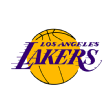
Less than 24 hours into free agency, the Lakers' 2023-24 roster is nearly complete. Re-signing Russell was the last key domino for the Lakers. Once they decided to use their non-taxpayer midlevel exception (on Vincent) rather than cap space or pursuing a sign-and-trade for a replacement at point guard, bringing back Russell on a short-team deal was a sensible outcome for both sides.
In exchange for taking a pay cut from last season, when he made $31.4 million as part of a max deal that sent him to the Golden State Warriors via sign-and-trade in the summer of 2019, Russell gets a player option that will allow him back into free agency next year. With cap space no longer an option for the Lakers at that point, Russell might have the leverage to secure a bigger, long-term deal if he plays well this season.
Meanwhile, signing what can be a one-year deal would give Russell the right to veto any trade sending him elsewhere. As Nate Duncan of the Dunc'd On Basketball NBA podcast noted on Twitter, the new CBA does allow him to waive that right at the time of the signing if the Lakers made it a condition of their offer.
From the Lakers' perspective, dropping Russell's salary was important to manage the hard cap at $172 million incurred by using their exceptions. Factoring in a contract for second-round pick Maxwell Lewis, the Lakers should have somewhere in the neighborhood of $7 million at most to spend on two remaining roster spots.
Having committed their non-taxpayer midlevel and biannual exceptions, the only way for the Lakers to use that spending power for more than the minimum is to re-sign their own free agents. I'd speculate they'll end up bringing back one of guards Malik Beasley and Lonnie Walker IV but not both.
As for Reaves, there was never any question he'd be back with the Lakers as a restricted free agent subject to the so-called "Arenas provision" of the CBA limiting his salary over the next two years. The question was whether the Lakers would have to match a backloaded offer to him from a team with cap space that could have escalated his salary to the largest possible ($37.4 million) in Year 3.
Things broke well with the Lakers, as nearly all the other teams with cap space used it elsewhere over the first 24 hours of free agency. By Saturday, only the Houston Rockets and San Antonio Spurs loomed as possibilities, seemingly with other priorities. So instead of a deal that could have paid Reaves up to $102 million over four years, the Lakers will get him for barely half that over the same span.
Reaves' play after the All-Star break and into the playoffs merited the larger contract, and it's a bit disappointing for him and for the Lakers' Western Conference rivals that he didn't land it. Still, this is a remarkable payday for a player who went undrafted in 2021. Reaves will also have the ability to get back into free agency -- unrestricted this time -- in his 20s.
After Friday's deals, I highlighted backup center as a remaining need for the Lakers. They addressed that with what is surely a minimum deal for Jaxson Hayes, adding a third player drafted in the 2019 top 10 (Hayes went No. 8) to Rui Hachimura (No. 9) and Cam Reddish (No. 10).
The best stretch of Hayes' New Orleans Pelicans career actually came as a starting power forward next to Jonas Valanciunas during the 2022 stretch run and playoffs. Hayes averaged 10.7 PPG and 5.7 RPG after the All-Star break, making a decent number of 3s (13-of-31) to supply floor spacing. As a center, he's operated more as a rim runner, important when the shooting dried up last season (3-of-29 from 3).
The Lakers will be counting on Hayes to show development as an interior defender in terms of being in the right place at the right time. Given his age and the low price, this is a good bet for the Lakers, who may not even use a backup center in the playoffs if their other frontcourt options are healthy.
Before taking care of their own free agents, the Lakers spent the opening hours of free agency adding to their roster using exceptions. Vincent's deal will utilize the non-taxpayer midlevel exception, while Prince gets the biannual exception, both of which will serve to hard cap the Lakers at the first luxury-tax apron of $172 million.
That restriction shouldn't prevent the Lakers from bringing back young starters Austin Reaves and D'Angelo Russell, in addition to Hachimura. Reaves' first-year salary is capped at $12.4 million, whether he re-signs with the Lakers outright or they match a backloaded offer sheet to him using the so-called "Gilbert Arenas provision" of the CBA.
Add in a pair of minimum contracts, as well as second-round pick Maxwell Lewis and that would give the Lakers about $25 million to use on Russell or other free agents.
Taking a step back, let's look at what the Lakers' roster will look like if they bring back their other two young free agents. Vincent would join a backcourt rotation with Reaves and Russell, giving them a more physical defender at the point of attack.
After watching Vincent start throughout the Miami Heat's run to the NBA Finals, the Lakers can feel good about trusting him at the highest levels of playoff competition -- something they were unable to do with Russell in the Western Conference finals.
At the same time, the Vincent we saw average 30.5 MPG in the 2023 playoffs was different in an important way from the version who was a part-time starter during the regular season. Vincent hit 38% of his 3s in the playoffs after making just 33% during the regular season, more in line with his career mark (34%).
As a below-average 3-point shooter, Vincent has scored inefficiently during the regular season. His .533 true shooting percentage in 2022-23 was closer to Russell Westbrook's .496 mark (albeit at lower volume) than D'Angelo Russell's career-high .610. So the Lakers are to some degree betting on Vincent's playoff shooting carrying over. At least that bet is on a player in his prime (age 27) who can capably defend his position.
Something similar is true of Hachimura, who also rode a playoff hot streak from beyond the arc (49% on 39 attempts) after shooting just 30% following his midseason trade to the Lakers. A career 35% 3-point shooter, Hachimura should settle in somewhere between those extremes, and just how close he gets to 40% will determine whether he can justify a deal that pays him like a starter.
At 25, Hachimura is still on the upswing, and he demonstrated in the playoffs he can hold his own defensively so long as Anthony Davis or LeBron James is alongside him.
Reddish follows a similar script. Both were lottery picks in 2019 (Hachimura ninth, Reddish 10th) who haven't yet produced at that level in the NBA. Reddish, long rumored as a Lakers target via trade, bounced around to three teams on his rookie contract, starting for the Portland Trail Blazers after a midseason deal last year but not changing his outlook in free agency.
Again, shooting is the question mark. Reddish has hit 32% of his career 3s, making him a tough fit on a team always desperate to space the floor around its stars. In this case, the price was unquestionably right. Having committed their exceptions elsewhere, the Lakers landed Reddish on a two-year deal at the veteran's minimum with a player option on the second season.
Waived by the Minnesota Timberwolves earlier this week before his $7.65 million salary for this year guaranteed, Prince looks like an upgrade on the parade of minimum-salary forwards the Lakers have signed the past two summers. A 37% career 3-point shooter, Prince will offer floor-spacing and the ability to defend either forward spot depending on matchups, slotting in with Hachimura behind James and Jarred Vanderbilt.
The Lakers could still stand to add a backup center after waiving Mo Bamba earlier this week. Barring a surprising defection by one of their other free agents, however, the Lakers have an eight-player playoff rotation in place that looks at full strength like an upgrade on last year's team that reached the Western Conference finals.
Milwaukee Bucks
Deals:
Agreed to a reported two-year, $48 million deal to re-sign center Brook Lopez
Agreed to a reported three-year, $102 million deal to re-sign forward Khris Middleton

The Houston Rockets' reported pursuit of Lopez put the Bucks in a difficult spot. They couldn't afford to replace Lopez even with access to the non-taxpayer midlevel exception, meaning Milwaukee had to pay up to retain its starting center.
At age 35, Lopez will come close to doubling the $13 million he averaged on the four-year contract that just concluded. Based on last year's play, Lopez is well worth it. He earned my Defensive Player of the Year vote for his role in leading the NBA's fourth-best defense on a per-possession basis, finishing runner-up to Jaren Jackson Jr. Lopez also averaged 15.9 PPG, his most since 2016-17, boosting his true shooting percentage to a career-high .630.
Because of his age, the question is how long Lopez can keep up this level of play. The good news is his size and shooting ability don't seem likely to wane, meaning Lopez will remain a high-quality starting center as long as he's quick enough to be in position to use those skills. Keeping this deal at two years rather than going to three at a slightly smaller annual salary limits the Bucks' downside risk.
For now, Lopez's salary probably limits Milwaukee to filling out the roster with minimum contracts for newcomers barring a money-saving trade. Using the $5 million taxpayer midlevel exception would hard-cap the Bucks at the new second apron, where unlikely incentives in Jrue Holiday's contract would count against them. The new rules will allow Milwaukee to re-sign its own free agents without incurring the hard cap. That could make Jae Crowder's return a more favorable option, if only with an eye toward trading Crowder down the road.
Much like the Golden State Warriors' new contract for Draymond Green, this deal sees Middleton trade off 2023-24 salary for long-term security in a way that should benefit both player and team.
The player option Middleton turned down was worth $40.4 million, meaning he'll be taking a discount of more than $8 million assuming standard 8% raises and a first-year salary of $31.5 million. Down the road, Middleton adds $60 million in guaranteed salary, more than he could have been certain of getting as an unrestricted free agent next summer heading into his age-33 season.
Already, Middleton was coming off an injury-marred 2022-23 regular season that saw him limited to 33 games and 24.3 MPG, the fewest he's played since arriving in Milwaukee in 2013. By playoff time, however, Middleton was back to his usual productivity. He averaged 23.8 PPG, 6.4 RPG and 6.2 APG in the Bucks' surprising first-round loss to the Miami Heat, similar to his production during the team's 2021 title run.
That performance and the number of teams with cap space and needs on the wing, most notably the Houston Rockets and Sacramento Kings, gave Middleton the leverage he needed to secure another long-term deal. Milwaukee couldn't have replaced Middleton had he departed.
New Orleans Pelicans
Deal: Agreed to a reported four-year, $54 million deal to re-sign forward Herb Jones
 Given the bigger contracts and players changing teams in the opening hours of free agency, this deal went under the radar, but it's one of the more fascinating this offseason.
Given the bigger contracts and players changing teams in the opening hours of free agency, this deal went under the radar, but it's one of the more fascinating this offseason.
Earlier this week, the Pelicans chose to decline a $1.8 million team option for Jones in favor of making him a restricted free agent. That was surprising because unlike other cases where this happens -- most notably two-time MVP Nikola Jokic after his third season -- Jones would have still been restricted at the end of his deal next summer.
Another possibility was New Orleans giving Jones a raise this season in exchange for smaller annual salaries the remainder of the contract. That doesn't seem to be the case here, as Jones got the largest possible contract using early Bird rights.
By agreeing to a deal now, the Pelicans did forestall the possibility of a team coming in with a big offer sheet for Jones next summer. However, a 2024 offer sheet would have had to pay him more than $17 million annually over the next three years -- far more than the non-taxpayer midlevel exception -- to match what he'll actually get on this contract.
Kudos to Jones, who has certainly earned the payday with his productive play as a starter during his first two years as a second-round pick out of Alabama. This still doesn't seem to be a case of New Orleans utilizing its leverage, and that will have implications for the rest of the roster.
This contract for Jones pushes the Pelicans more than $4 million into the luxury tax with 12 players under contract. New Orleans can save money by waiving Garrett Temple, whose $5.4 million salary is non-guaranteed, but filling out the roster would still take them over the tax line.
Along with the Charlotte Hornets, the Pelicans are one of two teams that has never paid the luxury tax. We'll see whether that changes this season or if New Orleans makes money-saving moves by the trade deadline.
Washington Wizards
Deal: Agreed to a reported four-year, $102 million deal with forward Kyle Kuzma
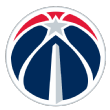 After a few busy weeks, led by team president Michael Winger trading away a pair of incumbent starters (and Chris Paul, acquired in one of those deals), it's a little surprising to see the Wizards retain Kuzma as an unrestricted free agent with a big-time raise off the $13 million team option he declined.
After a few busy weeks, led by team president Michael Winger trading away a pair of incumbent starters (and Chris Paul, acquired in one of those deals), it's a little surprising to see the Wizards retain Kuzma as an unrestricted free agent with a big-time raise off the $13 million team option he declined.
Although the raise means Kuzma can't be traded until Jan. 15, he would still probably be wise to rent instead of buying in the DMV. It wouldn't be surprising if part of Washington's logic was utilizing Kuzma's Bird rights to keep him on a contract that will be tradeable for value down the line.
Assuming he continues to play like last season, when he averaged a career-high 21.5 PPG, there will be a market for Kuzma. He can play either forward spot, has developed into a capable team defender and supplies just enough shooting to keep defenses honest when he doesn't have the ball.
The latter factor will be key if Kuzma ends up on a contender. He shot 36% from 3-point range for the Lakers in 2020-21, but has been a volume 3-point shooter in two years with the Wizards, making a combined 34% -- also his career mark. Kuzma got up a robust 7.5 3-pointers per game last season, and historically volume has been a better predictor of a player's gravity as a shooter than accuracy.
That said, Kuzma is much more valuable with the ball. Relative to league average on those shots, his effective field-goal percentage (eFG%) on attempts with at least two seconds of touch time -- roughly, self-created shots -- was 4% better last season, his lowest mark since 2019-20. Meanwhile, according to analysis of data from NBA Advanced Stats, his eFG% on attempts with two seconds or less touch time was 8% worse and has never in his career been better than average.
With Bradley Beal and Kristaps Porzingis gone, Kuzma should have plenty of opportunity to create his own shots next season. Kuzma and Jordan Poole will be the primary sources of offense in Washington. The Wizards will surely be hoping for Kuzma to boost his scoring average even higher and add value. Depending on how the season goes, that might be Kuzma's wish too.
Orlando Magic
Deals:
Agreed to a reported two-year, $22 million deal with forward Joe Ingles
Agreed to a reported two-year, $16 million deal to re-sign center Mo Wagner
 It doesn't appear this offseason is going to bring Orlando a marquee upgrade via free agency to try to get back to the postseason after jumping from 22 wins to 34 last year. The Magic entered free agency with up to $20 million in cap space after guaranteeing the contracts of guards Markelle Fultz and Gary Harris.
It doesn't appear this offseason is going to bring Orlando a marquee upgrade via free agency to try to get back to the postseason after jumping from 22 wins to 34 last year. The Magic entered free agency with up to $20 million in cap space after guaranteeing the contracts of guards Markelle Fultz and Gary Harris.
Signing Ingles to a deal near the non-taxpayer midlevel exception will utilize most of that room. Given Orlando's need for shooting and fondness for size on the perimeter, Ingles could be a fit. He played well for the Milwaukee Bucks after coming back from an ACL tear ahead of schedule in December, shooting 40% from 3-point range and duplicating his per-minute scoring and assist averages from the previous season with the Utah Jazz prior to the injury.
With Ingles set to turn 36 before opening night, aging is a concern. Milwaukee limited Ingles to 22.7 MPG in a reserve role and the Magic have enough depth on the perimeter, including lottery picks Anthony Black and Jett Howard, to manage his playing time the same way. Signing Ingles left Orlando with about $9 million in space, which they could increase to $11 million by using the room exception to re-sign Wagner while renouncing his Bird rights.
Given the Magic already have 16 players under contract and will have to waive someone prior to opening night, that room might best be utilized taking on an unwanted salary via trade. Playing alongside younger brother Franz, Wagner had the best season of his career in 2022-23, averaging 19.5 points and 8.4 rebounds per 36 minutes.
Although a below-average 3-point shooter (32% career, a tick higher than last season's 31% mark), Wagner is skilled enough to be a threat facing the basket and give Orlando a slightly different look than with starting center Wendell Carter Jr. Since Franz Wagner isn't due for an extension until next summer, it seems reasonable to think that these contracts will give the Magic flexibility to create cap space in 2024 and go shopping for a bigger upgrade then.
Toronto Raptors
Deals:
Agreed to a reported four-year, $80 million deal to re-sign center Jakob Poeltl
Agreed to a reported two-year, $26 million deal with guard Dennis Schroder
 In the wake of Fred VanVleet's departure for the Houston Rockets, it's tough to tell what direction the Raptors are going besides "inertia."
In the wake of Fred VanVleet's departure for the Houston Rockets, it's tough to tell what direction the Raptors are going besides "inertia."
Not long after news broke on VanVleet, Toronto reportedly agreed to a deal with Schroder using their non-taxpayer midlevel exception as a replacement. It's an impressive rebound for Schroder, who made a combined $8.8 million the past two seasons, playing 2021-22 for the minimum.
Barring further moves, the Raptors don't look like a playoff team in 2023-24. They weren't last year with VanVleet, falling at home in the 9-10 play-in game, and his departure gives them less shooting and playmaking. Schroder put together a nice season with the Lakers, particularly at the defensive end of the court, but he's a lower-volume scorer than VanVleet and no more efficient.
Perhaps internal development from O.G. Anunoby and Scottie Barnes can lift Toronto back into the playoffs. If not, the clock is ticking on both Anunoby (who can become a free agent next summer by declining a $19.9 million player option and is difficult to extend because his current contract is so team-friendly) and Pascal Siakam (entering the final season of his deal).
It feels like the Raptors keep kicking the can down the road before deciding on a direction. They were one of a handful of teams Tim Bontemps and I did not consider "all-in" on any particular timeline entering last season, and a year later little has changed. (Much has changed for the other two, the Lakers and Mavericks.) VanVleet's departure could have been an opportunity to reset things. Instead, Toronto continues apace.
Part of staying the course is re-signing Poeltl, acquired at last season's trade deadline when the Raptors ended up adding to their roster rather than trading away key players. The $20 million price point is comparable to the three-year extension Nikola Vucevic just signed with the Chicago Bulls, and the extra year makes more sense for Poeltl (27) than Vucevic.
Still, if Toronto does ever move toward a rebuild around Barnes (22 in August), a four-year contract for a non-star center doesn't feel like what the Raptors will want on their books.
Chicago Bulls
Deal:
Agreed to a reported three-year, $60 million extension with center Nikola Vucevic
Agreed to a reported three-year, $40 million deal to re-sign guard Coby White
Agreed to a reported three-year, $20 million deal with guard Jevon Carter
Agreed to a reported two-year deal with forward Torrey Craig
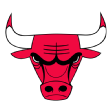 I like what the Bulls have accomplished in a modest offseason. The danger was Chicago running back basically the entire roster after a strong finish to last season (11-6 in their last 17 games, followed by a play-in tournament win at Toronto and a competitive loss at Miami). The Bulls will keep the same core, but have made some useful tweaks around the edges.
I like what the Bulls have accomplished in a modest offseason. The danger was Chicago running back basically the entire roster after a strong finish to last season (11-6 in their last 17 games, followed by a play-in tournament win at Toronto and a competitive loss at Miami). The Bulls will keep the same core, but have made some useful tweaks around the edges.
The biggest of these deals is to bring back White, who improbably ranked sixth in my projections for this year's free agents over the next three seasons, just ahead of fellow restricted free agent Cam Johnson. White's three-year deal will top out at less than 40% the value of Johnson's four-year, $108 million contract to re-sign with the Brooklyn Nets.
Admittedly, I'm not as bullish on White as the projections, but he's 23 and has been productive at a position with limited options in free agency beyond the stars. Keeping him at a reasonable price is a strong outcome for Chicago.
Last year's Bulls surge came after they added Patrick Beverley via buyout. Instead of re-signing Beverley, Chicago filled his role with another native son who happens to be six years younger at 28, making Carter a better long-term fit. Like Beverley, Carter can defend point guards for the Bulls while primarily spotting up on offense with DeMar DeRozan and Zach LaVine handling the ball. He made 42% of his 3-point attempts last season.
On Monday, Chicago made another value addition with Craig, who started a career-high 60 games for the Suns in 2022-23 while hitting a career-best 40% of 3-point attempts. Craig saw his role reduced in the playoffs as Phoenix sought to get more offense on the court, surely a factor in his decision to head elsewhere in free agency.
For the Bulls, Craig presumably fills the role Javonte Green did last season when healthy as an energizer and defender off the bench. Good on-ball, Craig isn't as active a team defender as Green but offers a dramatic shooting upgrade.
The last major order of business for Chicago will be re-signing restricted free agent Ayo Dosunmu. The Bulls should have enough room to offer Dosunmu a deal starting at or just above his $5.2 million qualifying offer without having to worry about pushing into the luxury tax. Tax concerns do make it unlikely Chicago makes use of the $10.2 million disabled player exception they applied to receive due to Lonzo Ball's injury, though the Bulls could create a less time-sensitive trade exception if they take a player in using the disabled player exception while sending out salary.
In the big picture, Chicago still has to figure out how to grow this roster into contention to win a playoff series without Ball. Extension talks for DeRozan and Patrick Williams loom, with the potential for pushing the Bulls into the tax for a team that doesn't merit that expense. Given where the team started, however, I've liked Chicago's offseason.